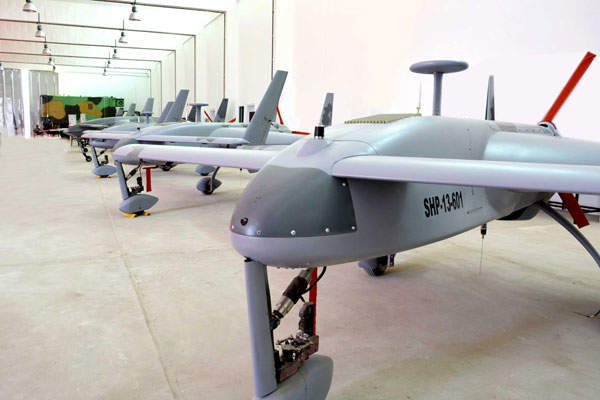SOURCE: AFI

The Pakistan Air Force (PAF) appears to have suffered a significant strategic and tactical miscalculation in its recent attempted aerial strike — a misjudgment that cost it dearly. Banking heavily on overwhelming Indian air defenses through coordinated drone swarm attacks, the PAF’s strategy aimed to create temporary windows of vulnerability in India’s Integrated Air Defence ecosystem. However, far from achieving its objectives, the operation only served to expose Pakistan’s poor understanding of India’s layered air defense network and resulted in a devastating blow to its strike capability.
At the heart of the failed operation was the assumption that swarming low-cost drones — acting as decoys or reconnaissance elements — could saturate Indian Air Defence (AD) systems, forcing them to expend interceptors and exhaust radar bandwidth. In theory, this could have temporarily blinded or distracted the IAF and Indian Army Air Defence elements, creating exploitable gaps for PAF’s manned aircraft and standoff platforms to deliver their payloads of cruise missiles and air-to-ground munitions.
PAF strike elements reportedly attempted to briefly “pop up” from low altitude during this chaos, release their weapons, and retreat before facing interception. This classic shoot-and-scoot tactic, however, ran into a harsh reality: India’s multi-tiered, digitally fused air defense system, the Integrated Air Command and Control System (IACCS), proved more than capable of handling this mixed-mode threat.
Instead of being overwhelmed, the Indian Air Defence network functioned precisely as intended. The bulk of the drone swarms were handled efficiently by Army Air Defence units, which employed both kinetic and electronic warfare measures. SHORADs (Short Range Air Defence systems), including Akash and Spyder systems in conjunction with man-portable air-defense systems (MANPADS), intercepted multiple targets even before they reached critical assets.
The layered nature of IACCS — which fuses data from airborne early warning systems, ground-based radars, and satellite inputs — ensured that low-flying strike aircraft and incoming cruise missiles were quickly detected and tracked. With coordination between the Indian Air Force and Army Air Defence, interception vectors were assigned within seconds.
PAF’s strike platforms, likely including JF-17s and modified Mirages, were decisively engaged by fighter patrols and surface-to-air missile batteries. Some reportedly failed to even complete their release run. The few cruise missiles and glide bombs that were deployed were intercepted mid-air, or caused minimal damage due to hardening of target sites and pre-emptive dispersion of key assets.
Moreover, PAF’s attempt to synchronize swarm drones with manned strike packages indicates a level of risk acceptance that seems detached from operational reality. In an era where Indian airspace is monitored round-the-clock by Netra AEW&Cs, Phalcon systems, and a robust ground radar grid, any such gamble was destined to end poorly.
This debacle is more than just a failed mission — it’s a signal of deterrence. The Indian Air Defence apparatus has proven it can handle complex, multi-domain attacks with precision and speed. For PAF, the loss of aircraft and munitions, combined with the failure to achieve any meaningful impact, could dampen morale and force a doctrinal rethink.
For India, it offers an opportunity to further strengthen real-time civil-military coordination under IACCS and continue hardening vulnerable sites. It also affirms the value of investing in indigenous air defense systems like Akash-NG, as well as counter-drone capabilities which played a pivotal role in this engagement.
NOTE: AFI is a proud outsourced content creator partner of IDRW.ORG. All content created by AFI is the sole property of AFI and is protected by copyright. AFI takes copyright infringement seriously and will pursue all legal options available to protect its content.